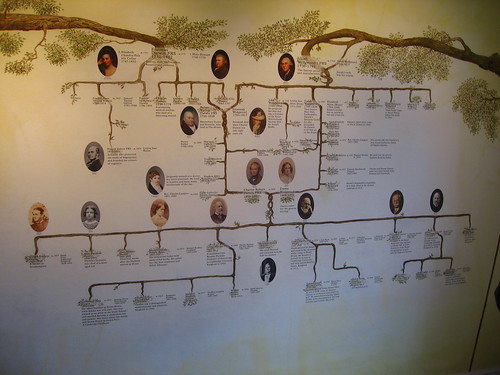by Taylor Gida
| Charles Darwin's House at Down |
Charles Darwin is one of the most renowned scientists to have ever lived. In most of today's classrooms, Darwin's Theory of Evolution is as important to the biological sciences as Isaac Newton's discoveries were to the understanding of Physics.While most of his field work was conducted on the HMS Beagle, it is at his home that Darwin did his most influential work.
The house was first and foremost home to Darwin, his wife and their many children. But it is also the birthplace of his great work The Origin of Species that gave the world its first in-depth explanation about the mechanisms for evolution by natural selection. Understanding the potential consequences of his ideas, he wanted an unassailable set of evidence for his theory. In the large garden area behind the house he performed an extensive number of experiments using plants and insects from around the world Over the course of 20 years he worked on his manuscript, making the necessary intellectual leaps to make sense of his data.When we first pulled up to the house at Down I saw that the house itself was a quaint two-story home that, although large to my eyes, was probably cozy if not small for a family boasting 10 children. As I began the self-guided tour of upper floor of the house, I was pleasantly surprised to see almost half of the floor was dedicated to the home life of the Darwin family as well as a number of interactive games and videos. This combination worked together create a fun and comfortable atmosphere that I'm sure kept the younger visitors (and many of the older ones as well) of this museum thoroughly entertained.
 |
| Darwin Family Tree |
Having studied Darwin and his work in several different classes, the rooms summarizing his research provided very little new information for me personally. Looking at his notebooks and a few of his preserved specimens was fascinating (especially the finches--his most famous example), but what really caught my attention was how much this site emphasized the impact Darwin's home life had on his work, most notably the death of his daughter Anne, which not only crushed his faith in Christianity, but also cemented his belief that life was a competition for survival rather than a strive towards harmony. The rooms that showed that he was a loving and supportive father to his children made him much more human to me than ever before, which is probably why I loved them so much.
| Garden Path |
It was also remarkable to be able to walk in Charles Darwin's footsteps during the audio tour of the garden. Once I broke through the barrier of unclear walking directions and was able to match locations to the stories I was listening to, it was easy to call up the images of Darwin puttering around the greenhouse or taking a stroll along the sandwalk with his children. While there are very few of Darwin's original specimens still preserved, and none of them in that greenhouse, I found that there was an atmosphere of scientific study infused within the space. Whether it was from the preserved nature of the house and its museum of Darwinian artefacts or the simple, natural state of the garden I can't say.
| Inside the Greenhouse |
Overall I found this site to be enjoyable, informative, and interactive. It is definitely a unique type of museum that is perfect for those people who prefer active, hands-on styles of learning. But it is also great for those who--like me--enjoy getting a glimpse at the man behind the science.
Sincerely,
Taylor Gida
No comments:
Post a Comment